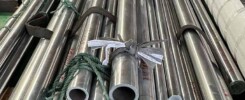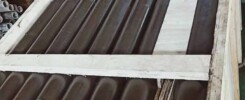When selecting materials for high-strength, wear-resistant components like shafts, pins, or hydraulic rods, the choice between 40Cr and 4140 alloy steel is critical. Both are widely used in industrial applications, but their distinct chemical compositions, mechanical properties, and heat treatment responses make them better suited for specific use cases.
As a leading manufacturer of 40Cr hard chrome plated rods, we break down these differences to help you optimize your material selection—and explain why our precision-engineered rods outperform competitors.
40Cr (GB/T 3077 Standard)
- Carbon (C): 0.37–0.44% (medium carbon for balanced strength and machinability).
- Chromium (Cr): 0.8–1.1% (enhances hardenability and surface wear resistance).
- Other elements: Manganese (Mn) 0.8–1.1%, silicon (Si) 0.17–0.37%, with minimal impurities (e.g., sulfur ≤0.035%).
4140 (ASTM A29/A1085 Standard, Equivalent to China’s 42CrMo)
- Carbon (C): 0.38–0.43% (similar to 40Cr but slightly lower).
- Chromium (Cr): 0.9–1.2% (higher than 40Cr for improved hardenability).
- Molybdenum (Mo): 0.15–0.25% (critical additive for high-temperature strength and creep resistance).
- Manganese (Mn): 0.75–1.0%, silicon (Si) 0.17–0.37%.
40Cr Hardness After Heat Treatment
- Typical Hardness: HRC 45–50 (after oil quenching + tempering at 150–250°C).
- Yield Strength: ≥785 MPa; Tensile Strength: ≥980 MPa.
- Toughness: Good impact resistance (AKV ≥47 J at -20°C) but less effective than 4140 under high stress.
4140 Hardness After Heat Treatment
- Typical Hardness: HRC 48–54 (with proper quenching/tempering; can reach HRC 58–62 with martempering).
- Yield Strength: ≥930 MPa; Tensile Strength: ≥1080 MPa (higher than 40Cr due to Mo’s solid solution strengthening).
- Toughness: Superior to 40Cr in high-temperature environments (e.g., 400°C), with better resistance to fatigue and creep.
Why Our 40Cr/4140 Hard Chrome Rods Stand Out
As a professional hydraulic tube and rods manufacturer, we go beyond material selection to ensure consistent quality:
- Precision Chrome Plating: Electroplated with a 20–50μm chromium layer using a closed-loop thickness control system (tolerance ±2μm).
- Full Material Traceability: Each rod is laser-marked with a unique ID linking to heat treatment records, chemical analysis reports, and plating thickness data.
- Custom Solutions: We offer both 40Cr and 4140 rods in diameters from Φ10mm to Φ300mm, with custom lengths and surface finishes (e.g., polished, ground).


